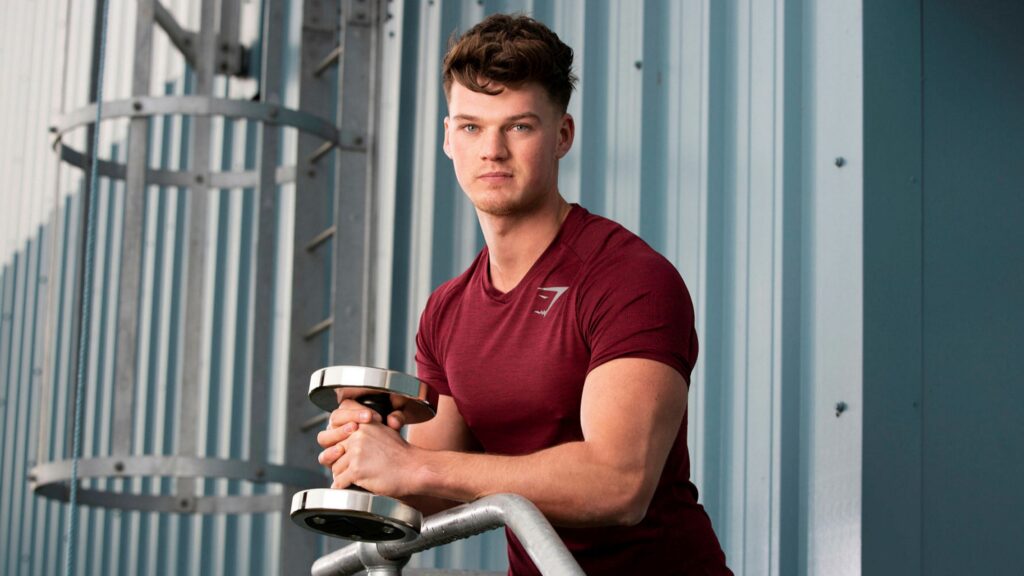How Gymshark Became A $1.3 Billion Brand, And What We Can Learn – Forbes

|
Getting your Trinity Audio player ready...
|
SOURCE: Jodie Cook | Forbes
Sports apparel brand Gymshark has just hit a $1.3 billion valuation after securing investment from General Atlantic. The company, started by Birmingham U.K.-born Ben Francis in 2012, now age 28, has entered into a strategic partnership in order to expand further internationally. General Atlantic will take a 21% stake in the business following the deal, which marks Gymshark’s first ever investment round.
Gymshark began life as a supplements company, before moving into clothing. The apparel, initially consisting of gym vests and t-shirts, was sewn and screen-printed by Francis, his brother and a group of friends after Francis’ grandmother taught him how to use a sewing machine. Francis said, at first, they were just making clothes they really wanted to wear themselves. They enjoyed learning how to create and fulfil the orders they had received, and priced items based on what sounded about right. Here’s how they grew so fast and here’s what entrepreneurs can learn from their approach.
Staying humble
This motto is displayed on walls at Gymshark HQ, and the #stayhumble Instagram hashtag is peppered with selfies from Gymshark fans and team members. Steve Hewitt, Gymshark’s CEO, advised that, “It takes zero talent to work hard and zero talent to stay humble; if you get those things right you will always do well in your journey.” Further advice from Hewitt is to “Learn to fail fast” and “Own as much of the supply chain as you can.”
The lessons: Staying humble is far harder the more success and fame you achieve. Keep things as simple as possible for as long as possible, scale with demand, and remember where you came from. Never underestimate the contribution of those around you and the fortune you’ve been granted.
Focusing on customer needs
Gymshark has a clear target audience of 18-25-year-olds whose lives revolve around fitness, fashion and music. They do not deviate from the audience and everything they do is aimed at their needs. Customers are looked after. In 2015 Gymshark suffered a website outage on Black Friday, resulting in customers not being able to get their deals. Whilst this might have broken many companies, Gymshark’s founder personally hand-wrote 2500 apology letters to customers, including discounts, who weren’t able to purchase during the crash.
The lessons: Proudly exclude everyone except your target audience so you can focus solely on them. Double down on the customer experience. Test your site, and test some more. Utilise the best technology to create exceptional customer touchpoints, via your website and in-person. If you do mess up, own the mistake, respond in an exceptional way and carry on.
Being visionaries
Part of Gymshark’s mission statement reads: “In everything we do, be true to our own vision and respectful of others. We are here to bring ideas to life. There is no idea too big, or too small… We are not future-proof. We are the future.” The brand is known by its fans for putting its own spin on timely topics. During the U.K.’s lengthy lockdown Gymshark employed otherwise out-of-work personal trainers to present on its gym workout app. They raised £180,000 for the NHS with their #NHSsweatyselfie campaign and their own version of the last Black Friday was #blackout, whereby the entire website was rebranded to match the theme.
The lessons: Dream big with what you could achieve and how many people could be involved. Plan your calendar of activity far in advance and be prepared to respond to last-minute events with hard-hitting campaigns. Explore everything that your target audience is already talking about and work out how to make it relevant to your brand in a big way.

How Gymshark became a $1.3bn brand, and what we can learn
Building an influencer community
Gymshark were the earliest adopters of the influencer marketing model, partnering with YouTubers including Lex Griffin and Nikki Blackketter. Now, the brand markets products through its community of Instagram influencers and YouTubers and sponsors a range of athletes, each of whom operate at the top of their game. The athletes include Irish professional boxer Katie Taylor and Ross Edgley, who in 2018 became the first person to swim (1780 miles) all the way around Great Britain.
Francis said, “From the point of view of the athletes we work with, we want to create a real, strong team that speaks to our values. And we work with them for a long, sustained period of time.”
The lessons: Don’t think of influencer marketing as a quick smash and grab, think of it as building relationships with people over a long period of time, for the benefit of both of your brands. The goal isn’t shallow and fleeting promotion. Be prepared to invest in the process and communicate you’re looking for long term. Do the research and keep standards insanely high.
Assembling a dream team
The brand’s HQ houses 500 team members and aims to “create a culture where every morning feels like Christmas morning” according to Hewitt. The Solihull campus also has Gymshark Lifting Club, a state-of-the-art strength training centre reserved for team members and invitation-only athletes.
Although Francis is founder and owner, he has opted out of the CEO role, explaining the decision in a YouTube video called “I’m not Gymshark’s CEO anymore” and recognising, “The most difficult thing for me was learning to trust others to do the things in the business that I used to do.” He also asserted, “You need to constantly be around people who give you a reality check, people who are better than you.” and admitted he rarely communicates via email, saying it’s too slow and he prefers to talk to his team.
The lessons: Hire the right people for the right seats, ensure alignment with vision and values and leave them to get on with executing. As the owner, you don’t have to be the CEO if that’s not your jam, you can design your own role. Work out how to give your team more and more, to ensure their best work and their pride at working for your brand.
Documenting everything
Gymshark uses its busy social media channels to document its entire journey. Videos and images appear regularly, whenever it opens a new premises or takes a new step. There are professionally filmed and edited walkthroughs of Gymshark HQ, Gymshark Lifting Club, plus the in-person events and behind-the-scenes photoshoots by different members of the team. There are topical updates in response to COVID-19 and how it affected their community and fans, as well as explainers of the decision behind getting involved in certain campaigns and opting out of others.
The lessons: The global brands set up before the 2000s didn’t have chance to document their journeys in such detail, but if they had they might be stronger today. Documenting every part of a brand’s journey lets its customers feel like they are getting an inside look. Use social media to be transparent. Everything you do can be remarkable content as long as it’s planned and executed exceptionally.
Building the founder’s profile
Francis has his own YouTube channel, with 162k followers, where he answers in-depth Q&As about his company and role, including how he grew the business and challenges he overcomes. He also uses it to announce news and share his own journey. Francis works with so many influencers, it makes sense that he practices what he preaches.
Video titles include, “My favourite apps for running Gymshark,” “Full explanation: the future of Gymshark” and “Creating the world’s greatest office.” It’s content of substance and it amasses messages of support, congratulations and secures customer loyalty.
The lessons: In documenting everything, include the founder. Be prominent as a company founder. It’s interesting. People want to know what you’re doing so they can associate with your success. They like to tell people when they first found out about you. Hold yourself accountable to staying humble and being personable. Create the public persona and control the news channels. Break the stories before the media do.
Emulate Gymshark’s journey by dreaming big but staying humble, documenting and sharing every part of your journey, including from the founder’s perspective, building long-term relationships with influencers and surprising and delighting your growing customer base.


